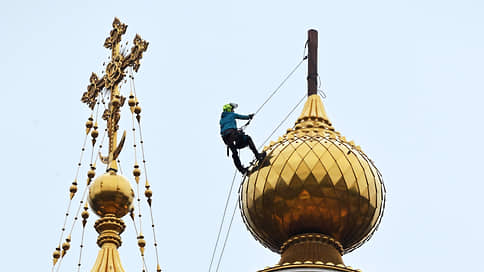gender confrontation on the stage of the 21st century

On the stage of the New Opera, the world premiere of the play “Carmen in my head” took place. Tatyana Kuznetsova He believes that the female attempt to see the events of the novel Merima, Jose, was not quite successful, unlike the performance itself, temperamental and passionate.
The idea to order the production of Carmen entirely a female team belongs to Anton Getman, the director of the New Opera, which has consisted of Ballet Moscow since 2022. Not just a team – a team of leaders: choreographer Tatyana Baganova, composer Nastasya Khrushcheva, scenographer Larisa Lomakina, costume designer Galya Solodovnikov. General installation: forgetting about Bizet, start with a clean sheet. Indeed, nothing opera-ballet, exotic-romantic, pathetic-free-loving is in this crowded, implicated on an erotic setness of the performance, in which there are only two characters, Carmen and Jose, but duplicated a dozen times.
However, the number of men in gray-blue coats resembling an overcoat is doubled by a choir that sets the tone with its tense staccato in the gear. Jose’s quantitative predominance is designed to approve him as the main character, as well as a quote from Carmen, three times shouted by a dancing protagonist: “… for this beautiful city with its Guadalkivir swimsuers disliked.” It is hardly remembered even by the note fans of Merima, and meanwhile, the impressive scene of the mass bathing of the “naked” inhabitants of the cordova, who is drunkenly leading to sexual excitement, the entire male population of the city, and the dance part of the performance opens: women, dropping blood-windy dresses (in front of all-time closed, with a triangular cutout-with a triangular cutout-with a triangular cutout-with a triangular cutout-with a triangular cutout Not to the coccyx and a cut almost to the priests), plunged into an orchestral pit, which is foaming with cellophane waves.
Nastasya Khrushcheva brings the stage excitement to the fossil with the captive rattle of the cello, a screech and wheezing of two violins, a metal ringing of royal chords – all 60 minutes of the performance, her music determines not only the atmosphere, but also the drama of action. The choreographer and composer seem to write a single stage score of gender confrontation, eternal and everyday. The modernity of the topic reinforces the decoration of the universal city: the gray-pink courtyard-bang, as if seen at two angles at once, is clearly inspired by the graphics of Mauritsa Escher. However, the “lying” windows and doors of the lateral structures remain on the periphery of vision, since the most important events – the pursuit of the elusive Carmen, sexual contractions, their exhausted conclusion – occur among the front interweaving of stairs, nooks and openings. The choreographer Baganova really uses vertical constructions, emphasizing the extreme dance, its confused, then measured rhythm, and hiding the straightness of the tasks of the characters behind the kaleidoscopicity of the mizaniscen.
The decision to propagate Carmen, dividing the manifestations of her disposition between the three soloists and the cordobalet, it seems to be saving (say, in the ballet “Carmen-Suyite”, the only one, the only one after Maya Plisetskaya, failed). But although the program includes “Carmen in longing”, “Carmen in manic persistence”, “Carmen in rage” and from the heels of contrasting Carmen, only one is remembered: small, clever, flexible, lively, restless Daria Komlyakova. The rest of the artists with varying degrees of persuasiveness show some female demonism and erotic attractiveness. Fortunately, the choreographer avoided typical ballet vulgarities like swaying hips, an wriggling of the camp, languid rifts on the floor and other illustrations of love intercourse. Women here are hunters. Having evaluated their victim and exhausting it with one hip movement, they go on an attack – so that even in the large rondes of Adagio and Piruet (Baganova, he does not alien to and quite classic combinations here) brings the growing rage of a love duel.
But there are few stylistic borrowings in the performance. Tatyana Baganova uses her own, and unusually stingy, language, when every joint becomes speaking, giving limbs the desired turn, and each contraction / stretching of muscles, noticeable in a specially selected perspective. Alas, this expressive asceticism was not enough for the final duet, in which Carmen with his hands and legs, the one’s threshes his Jose, so that his murderous answer to the fatal blows of the drum (a clear roll call with the Prokofiev death of Tibald) looks like pure self -defense. However, men in the play are by no means passive. And solo suffering are not deprived (especially plastic and accurate, the main Jose – Andrei Lega), and spectacular scales like an attempt to break out of female captivity: a soloist with a run as if trying to jump over the ramp, jumping higher and higher, but each time an invisible longe throws it back.
Naturally, the performance about Jose does not end with the death of Carmen. The clarification of the author’s interpretation is in the final aria to the words of the famous ballad romance Kitsa “La Belle Dame Sans Merci”-about the infernal girl-touring and her victim-chief. And a powerful pagan ending can be considered a phenomenon of a gigantic figure of death in a flirty wreath over a mask-chalop and a piquant orange bustier. With a sharp knife under the ceremoniously ringing sounds of Menuet, she cuts off the orange cover from the ribs of the Double Crinoline. And the lifeless bodies of men – victims of voluptuous insanity fall out of the gap, opening the orange fruits rushing along the stage – a symbol of sunny Spain. Whether the women-authors want or not, but the story of the ruined life of the soldier in love they conceived turns into a simple morality with a feminist shade: « Do not joke with fire-you will burn. » But the red -hot atmosphere of their performance is able to ignite with the hope that the independent life of the domestic modern dance still will not fade away under crinoline of isolation.







